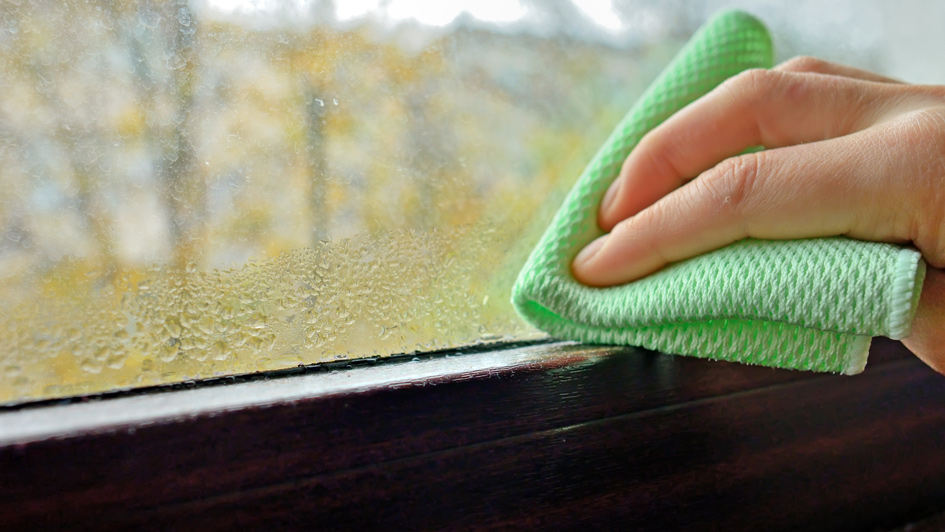
The windows in your home are a portal to the outdoors, a way to draw light in while you appreciate the view of your garden, yard or landscape. The last thing you would want to see is a sweaty window plastered in a coating of condensation.
Not only are windows plastered with condensation unsightly, they also can be a sign of a larger air-quality deficit within your home. Luckily, there’s several things you can do to resolve the problem.
What Causes Sweating on Windows
Condensation on the inner layer of windows is formed by the humid warm air inside your home mixing with the cold surface of your windows. It’s especially commonplace over the winter when it’s much colder outside than it is in your home.
Inside Moisture vs. In Between Panes
When discussing condensation, it’s necessary to understand the contrast between moisture on the inside of your windows compared to moisture in between the windowpanes. One is an indoor air quality issue and the other is a window issue.
- Moisture on the inside of a window is created from the warm humid air in your home condensing against the glass.
- Existing moisture you notice between windowpanes is produced when the window seal fails and moisture slips between the two panes of glass, and at that point the window needs to be repaired or replaced.
- Condensation inside the windows isn’t a window issue and can instead be solved by changing the humidity inside your home. Many things cause humidity in a home, such as showers, cooking, taking a bath or even breathing.
Why Condensation on Windows Can Be Trouble
Although you might consider condensation inside your windows is a cosmetic problem, it could also be a sign your home has higher humidity. If this is in fact the case, water could also be collecting on window frames, cold walls or other surfaces. Even a slim film of water can help wood surfaces to mildew or rot over time, fostering the growth of mildew or mold.
How to Lower Humidity Inside Your Home
Thankfully there are numerous options for removing moisture from the air inside your home.
If you have a humidifier operating inside your home – whether it be a small unit or a whole-house humidifier – lower it further so the humidity inside your home decreases.
If you don’t have a humidifier going and your home’s humidity level is higher than you prefer, think about installing a dehumidifier. While humidifiers adds moisture in your home so the air doesn’t dry out, a dehumidifier draws excess moisture out of the air.
Compact, portable dehumidifiers can absorb the water from an entire room. However, these units require clearing water trays and most often service a small area. A whole-house dehumidifier will eliminate moisture across your entire home.
Whole-house dehumidifier systems are regulated by a humidistat, which permits you to establish a humidity level precisely like you would choose a temperature via your thermostat. The unit will begin running instantly when the humidity level surpasses the set level. These systems work with your home’s HVAC system, so you should contact qualified professionals for whole-house dehumidifier installation Hendersonville.
Alternative Ways to Reduce Condensation on Windows
- Exhaust fans. Adding exhaust fans near humidity hotspots like the bathroom, laundry room or above the stove can help by extracting the warm, humid air from these areas out of your home before it can elevate the humidity level in your home.
- Ceiling fans. Turning on ceiling fans can also keep air circulating inside the home so humid air doesn’t get trapped in one spot.
- Open window treatments. Pulling open the blinds or drapes can reduce condensation by preventing the damp air from being trapped against the windowpane.
By lowering humidity across your home and dispersing air throughout your home, you can enjoy clear, moisture-free windows even during the winter.

